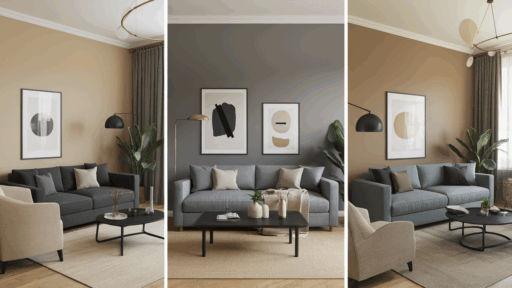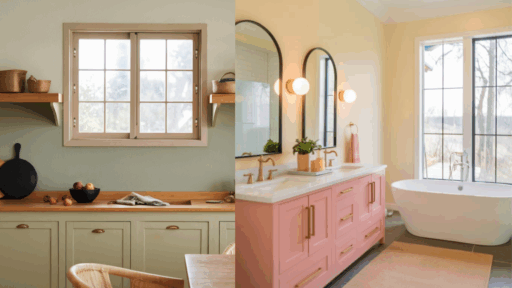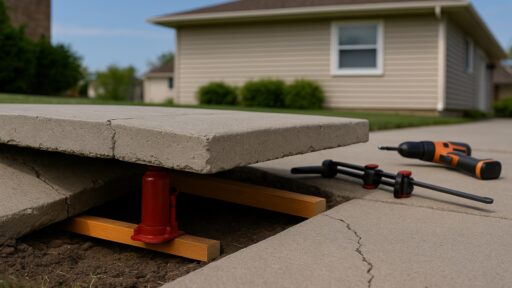If you’ve ever tried to eat dinner on a coffee table, you know the pain of compromise. Modern life often forces us to make do with spaces that aren’t quite built for everything we need them to be. Living rooms double as offices, dining areas blur into workspaces, and furniture has to flex around these hybrid zones. That’s where adjustable tables come in—not just as novelty gadgets, but as smart, space-conscious tools that can completely change how a room functions.
It’s not about having more things. It’s about having fewer things that do more. An adjustable table doesn’t just adjust in height or fold away for storage. It challenges the idea that furniture has to be fixed, or that its purpose is singular. The same table you sip your morning coffee on could become your standing desk by noon, and a full dining table by evening. But how does this actually work?
Inside the Mechanism
The mechanics of an adjustable table can vary wildly depending on design, but most are based on a few core principles: telescopic legs, gas-lift systems, or folding and sliding frames. Some use simple manual lifts, others incorporate hydraulic or spring-loaded components. What matters isn’t just that they move—it’s how smoothly and securely they do it.
Telescopic leg systems work much like camera tripods or height-adjustable stools. You extend or retract sections of the leg, often with a locking pin or a twist mechanism that secures them in place. This allows for incremental height shifts, which is useful if you want more than two fixed settings.
Gas-lift models function more like office chairs; you apply pressure to a hidden lever or button, and the internal gas spring raises or lowers the tabletop. These often feel more seamless and are ideal for people who want frequent, fuss-free transitions between uses.
Then there are hinge-and-fold or track-based designs, which allow the table to expand, collapse, or change shape. Think of it like origami for furniture—tables that extend from coffee-table height to dining height, with tops that flip open or slide out to double in surface area.
In homes where every centimetre matters, these designs offer something more than just novelty. They make your space adaptable. And if you’re looking to explore adjustable and folding table options, that’s where thoughtful design becomes key. It’s not just about movement—it’s about whether that movement is effortless, intuitive, and worth the floor space.
Why It’s About More Than Just Function
When you first hear about adjustable tables, it’s easy to assume they’re for people living in boxy city flats or studio apartments. And sure, they’re brilliant in small spaces. But their value goes beyond square footage.
An adjustable table adapts to your lifestyle, not just your room size. If you host often, it becomes a dining setup. If you work remotely, it becomes a desk. If you do neither but like your interiors neat and clutter-free, it tucks away when not in use.
This flexibility also changes how you think about permanence. Furniture is no longer a static background piece—it’s active, reactive, and tied to how you actually use a space. That can feel like a small thing, but the mental shift is powerful. It invites a different kind of living—less rigid, more fluid.
Design Still Matters
Of course, none of this works if the table looks like it belongs in a conference room. That’s where good design comes in. Today’s adjustable tables don’t scream “multi-use.” They whisper it.
Materials like solid oak or powder-coated steel, minimalist lines, muted palettes—these aren’t just aesthetic choices. They’re what help a flexible table blend into different roles without looking out of place. A table that looks equally at home under a laptop, a lasagne dish, or a stack of coffee-table books is doing more than just adjusting its legs—it’s fitting seamlessly into your life.
It’s also worth noting that, in most cases, these designs aren’t gimmicky. They’re the result of real engineering and real user needs. The best ones feel satisfying to use, like closing a well-made drawer or clicking a button that just feels right.
Is It Worth It?
Only you can answer that. If your table never needs to move, fold, store, or grow—then maybe not. But for many people, especially those who work from home or entertain regularly, the value becomes clear the first time you transition from work mode to dinner party without rearranging the whole room.
And even if you don’t use it daily, knowing your space can flex when you need it to is its own kind of luxury. You don’t have to compromise between practicality and aesthetics—you can have both.
In a way, adjustable tables reflect a broader shift in how we think about home. We want our spaces to be responsive, efficient, even a little clever. Because life rarely stays in one mode for long. And neither should your furniture.








